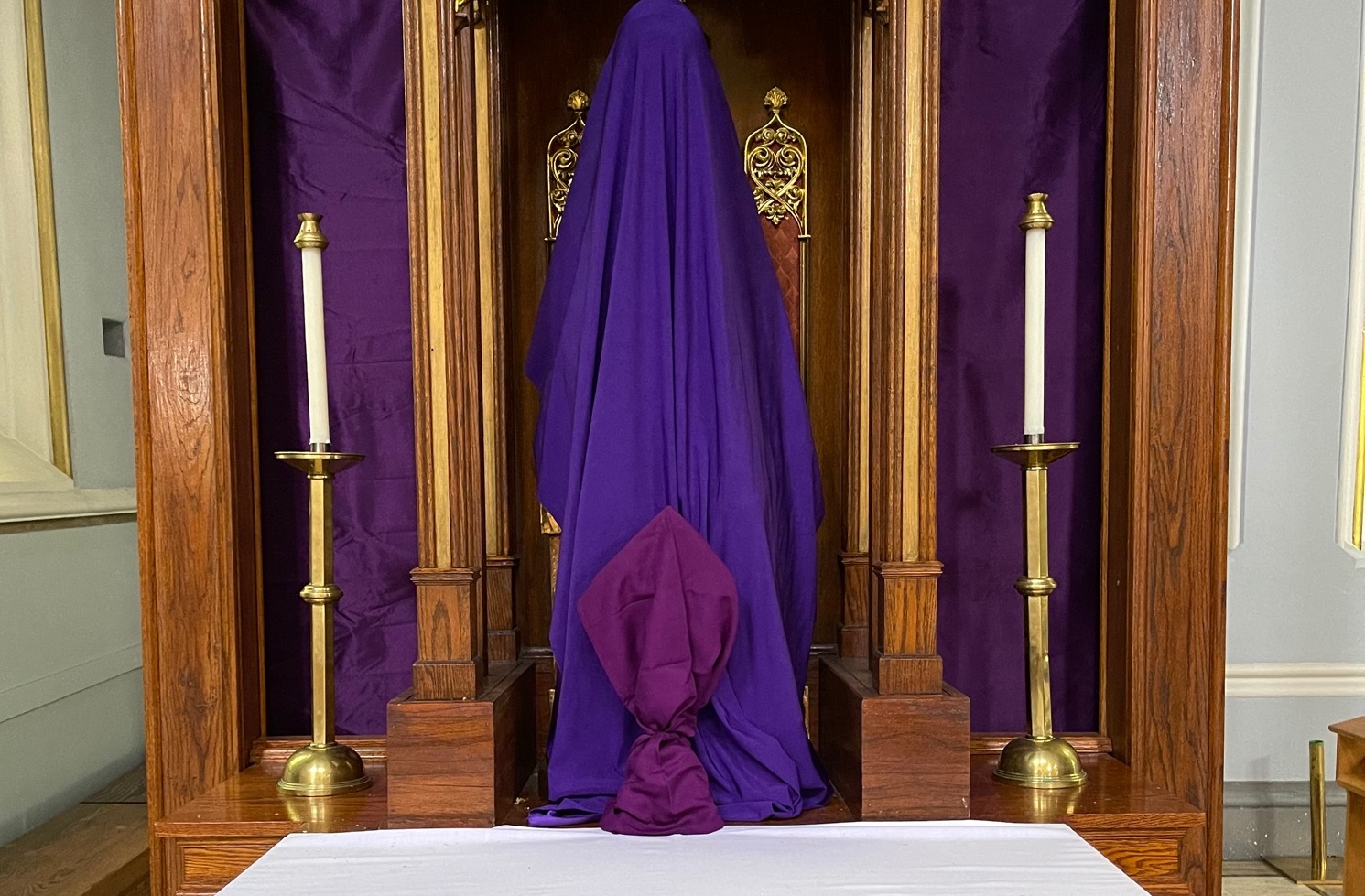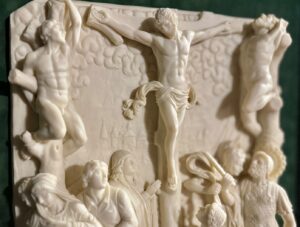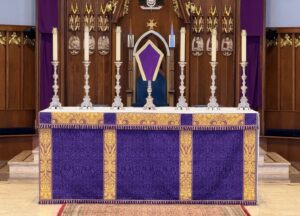It is common to see that during Holy Week the images in the churches are covered with a purple veilings. Purple or violet is the penitential colour of the Church’s liturgical life. But what is the meaning of veiling images during this time?
This custom of the Catholic Church has several meanings and it has centuries-old tradition. According to Abbot Prosper Guéranger, this custom “expresses the humiliation to which our Saviour submitted Himself, as related in the Gospel of the Lord’s Passion Sunday.”
The Crucifix is covered with a mournful veil. The sole object of meditation during these days will be the Passion and death of Christ. “Heaven of the holy Church becomes sad and sombre”. At the center of the liturgy stands the Holy Cross of the crucified one, in whose honour hymns of penance and mercy are sung. There are outward signs of mourning: the images of the Saints are covered, for the Church does not want to distract its gaze with beautiful sculptures, with the splendours of art, not even with the metals that adorn the sign of the Cross.
From the Fifth Sunday of Lent, the crucifix and of the church is veiled until the end of Good Friday, when the Passion of the Lord is celebrated. Specifically, until the moment in which the deacon or priest proclaims three times, while uncovering the Cross: “Behold the wood of the Cross, on which hung the Salvation of the world.” This ceremony, and the prayer itself, would not make sense if the crucifix had not been previously veiled. The rest of the images remain veiled until the beginning of the Easter Vigil.
These are days of mourning and the Church is covered with the veil of widowhood. The time of Passion is consecrated in a special way to the remembrance of the sufferings of Christ which obtained for us our salvation. When we see the empty and bereft church we are invited also to think what happens in the Church when Christ is not there. If Jesus had not risen, our faith would be in vain, and the images in the church would have no meaning.
This old custom of veiling religious images is intended to help us focus on the penitential aspect of this liturgical season. It reminds us in a visual way that our faith in all its glory is only possible through the work of Christ in his suffering and death on the cross.
In like manner just as at the church we ‘simplify’ the sanctuary in these last weeks of Lent in order to focus on the penitential aspect of the season, we can also simplify our homes by covering our crucifixes and other sacred images with purple garments. It reminds us that Our Blessed Lord hid his divine glory during his Passion, so we also hide our images of devotion to prepare ourselves for his Passion and resurrection.




